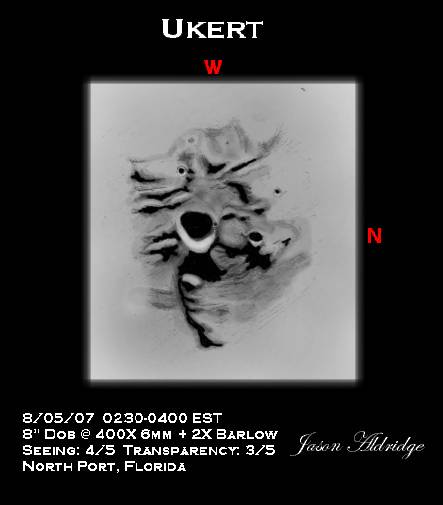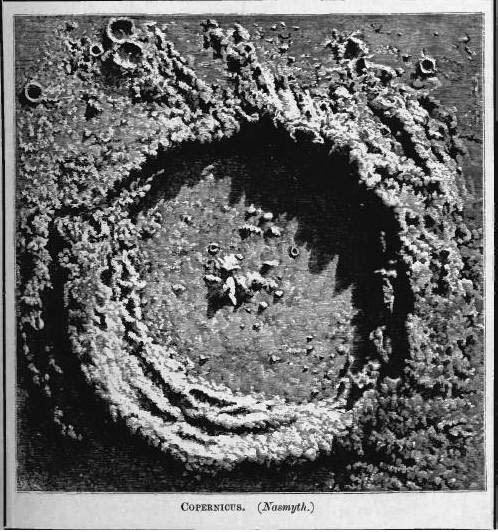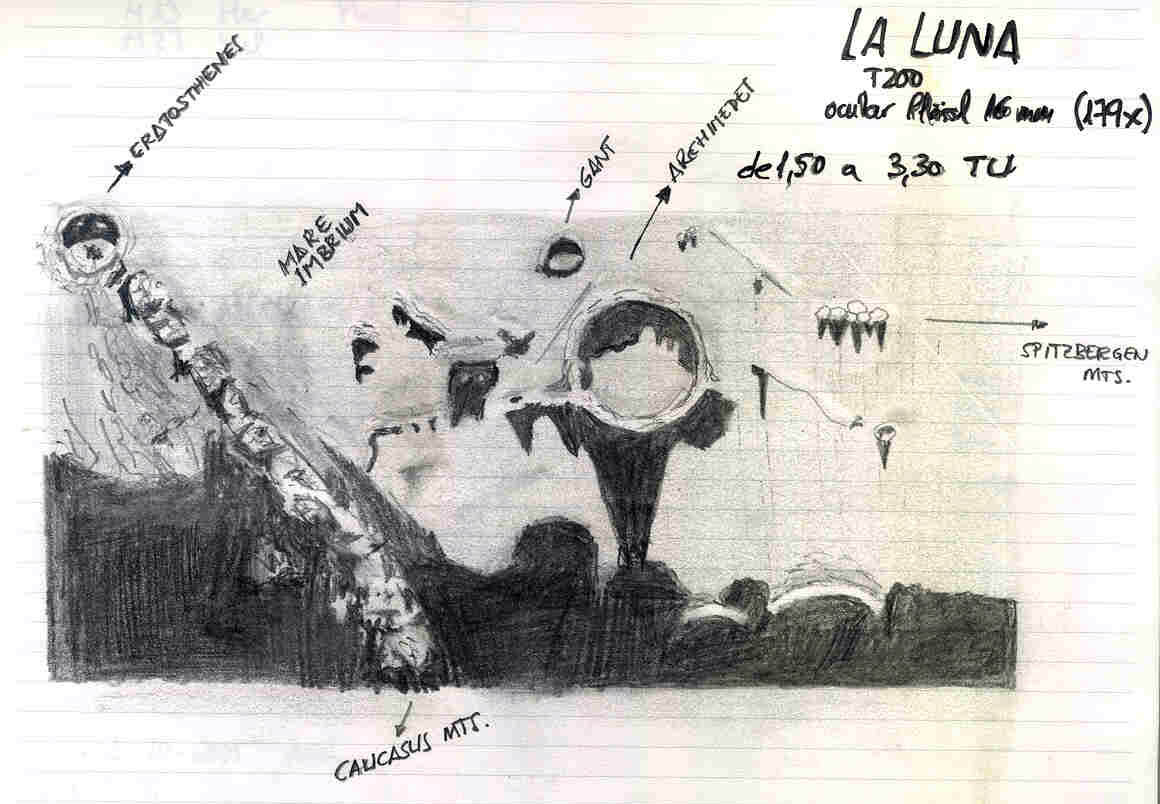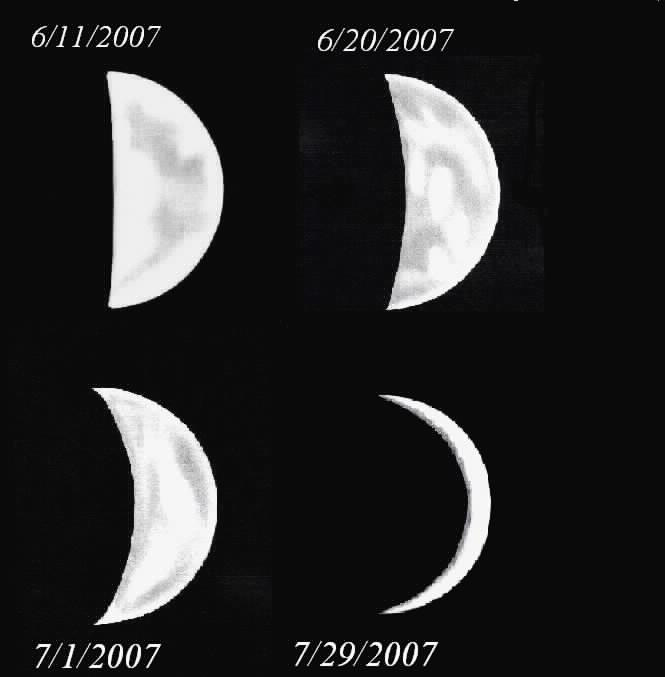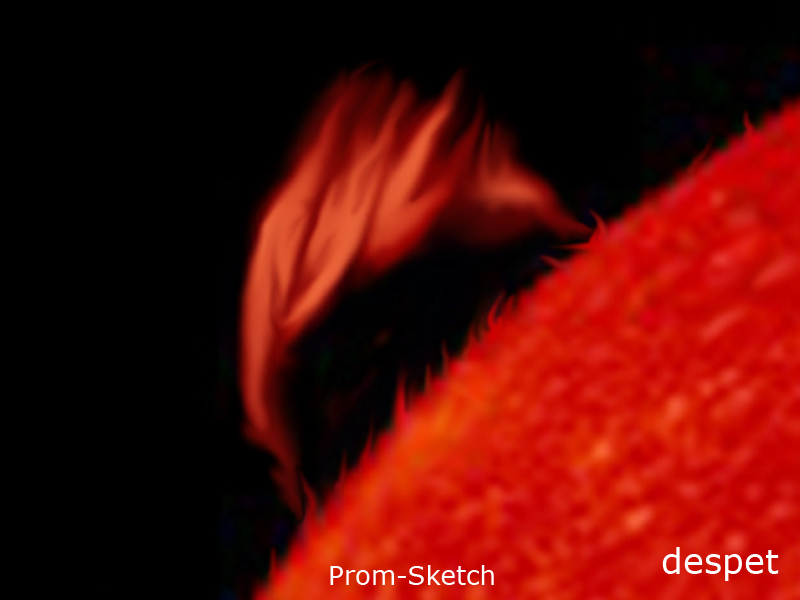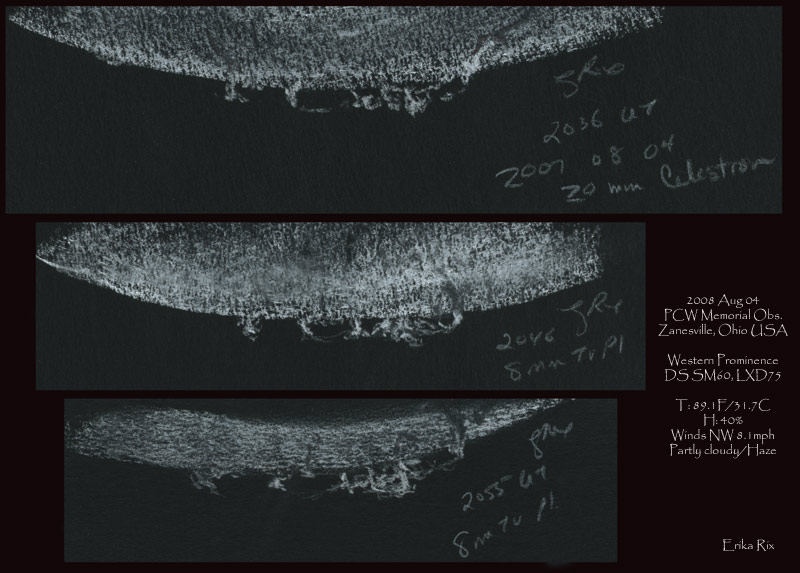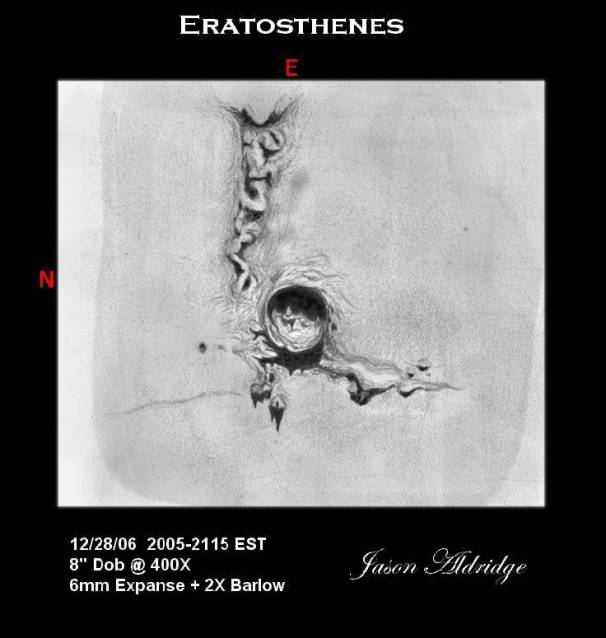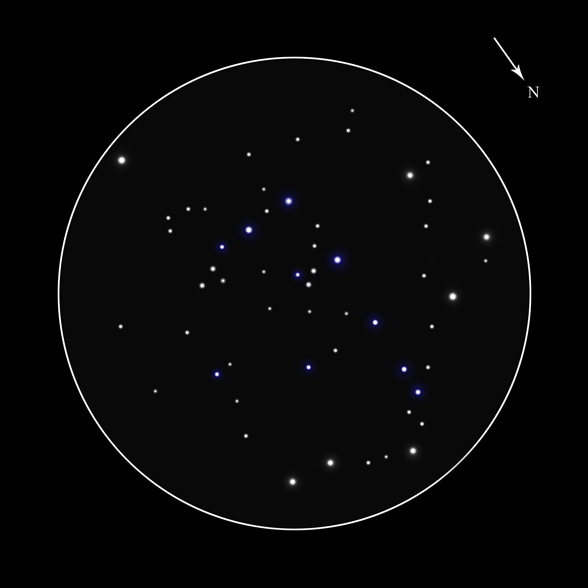The window of opportunity to explore the treasures of Sagittarius
is fairly brief from my 52 degree latitude observatory. This
coupled with the fact that my southern horizon looks towards the
closest town 2 miles away with the sprawl of London starting just
25miles further on make for challenging observing especially of
diffuse objects.
M17 the Swan or Check Mark nebula is one of the objects which I can get good views
of and one that visitors to my optics agree matches well with its name.
Last week I caught up with this fine and Royal bird swimming on its stellar river.
The view prompted me to dig out this sketch from a couple of seasons back to share
with others.
Scope used 14″ F5 Newtonian at 77x UHC Lumicon filter.HB pencil & blending stump
on white cartridge paper, scanned and saved as a negative with no enhancement.
From the Chippingdale Observatory, Hertfordshire, England.
Clear Skies, Dale



